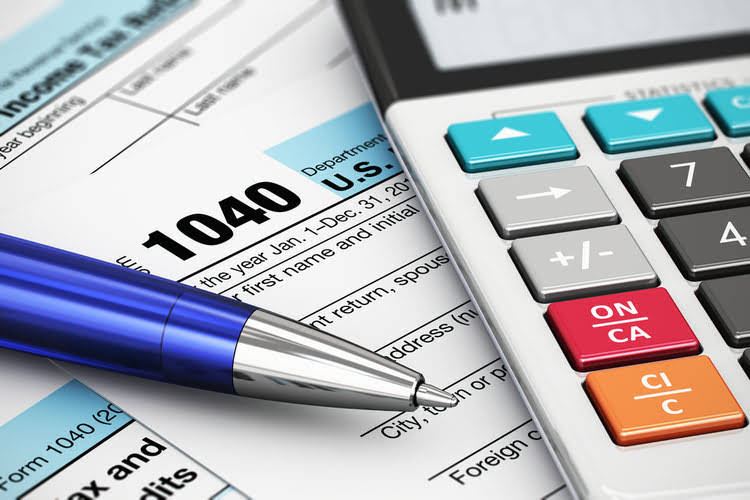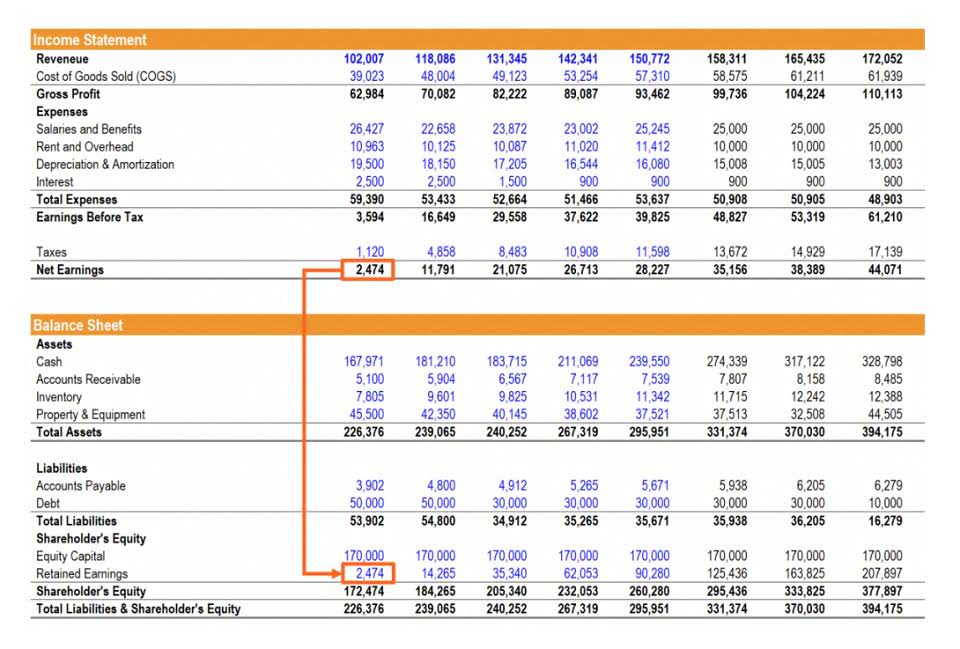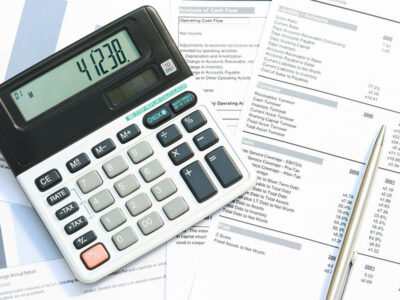Plastic, rubber, steel, iron, timber and many agricultural outputs like sugarcane, sugar beets, jute and cotton etc. are examples of direct materials that are processed to produce salable finished products. In manufacturing sector, the basic production costs can be categorized differently depending on the purpose and use of categorization. For example, they are often categorized as prime cost and conversion cost. This categorization is helpful in determining the efficiency of manufacturing facilities and processes in producing their output. These costs are then used to calculate the equivalent units and total production costs in a four-step process. The term conversion costs often appears in the calculation of the cost of an equivalent unit in a process costing system.
In a typical manufacturing process, direct manufacturing costs include direct materials and direct labor. However, they may also include the cost of supplies that are directly used in production process, and any other direct expenses that don’t fall under direct materials and direct labor categories. The total materials costs for the period (including any beginning inventory costs) is computed and divided by the equivalent units for materials. The total https://kelleysbookkeeping.com/ of the cost per unit for material ($1.17) and for conversion costs ($2.80) is the total cost of each unit transferred to the finishing department ($3.97). Conversion costs include the direct labor and overhead expenses incurred as raw materials are transformed into finished products. Conversion cost, as the name implies, is the total cost that a manufacturing entity incurs to transform or convert its direct materials into salable or finished product.
- Prime costs and conversion costs are two methods that businesses use to measure the efficiency of their production operations.
- For example, in the case of a phone manufacturer, the cost unit would be “per unit of phone.” It is critical to define cost units in order to accurately charge the costs incurred in all manufacturing processes.
- In addition, mislabeling a cost not only can affect us in the current formula, but it triggers a small domino effect by not including this cost in another possible formula or ratio in which it may belong.
- While the fully automated production does not need direct labor, it does need indirect labor in each step to ensure the machines are operating properly and to perform inspections (step 4).
These may include being used in external reports to the stakeholders of the business, using in evaluation of performance of different departments, used as a planning and control tool, etc. A periodical review of the firm’s prime cost is crucial to ensure the efficiency of its manufacturing process. The computational responsibility lies with the factory manager who collects the relevant data, calculates the prime cost figure for the period and reports the same to operations manager for review.
TIMES EARNED INTEREST RATIO (TIE Ratio): Definition, Formula and Uses
For this reason, it’s a more relevant number for operations managers, who may be looking at ways to reduce the indirect expenses of production. The manufacturing sector analyses both prime costs and conversion costs to measure efficiency in the production of a product. Direct labor costs include the salaries, wages, and benefits paid to employees who work on the finished products. Compensation paid to machinists, painters, or welders is common in calculating prime costs. Conversion costs are also used as a way to measure the efficiencies in the production processes but they also take into account the overheads in the production process, which are not calculated in prime costs. The conversion costs can also be used as a measure of the efficiency of the production process.
- The process cost system must calculate the equivalent units of production for units completed (with respect to materials and conversion) and for ending work in process with respect to materials and conversion.
- To complete a product, prime cost includes both direct material and direct cost, whereas conversion cost does not.
- Prime costs are reviewed by operations managers to ensure that the company is maintaining an efficient production process.
- Finding the cost of a product is the main focus of cost accounting, a branch of accountancy.
- Prime costs and conversion costs are relied upon heavily in the manufacturing sector to measure efficiency in the production of a product.
- These costs are then used to calculate the equivalent units and total production costs in a four-step process.
If they were \(100\%\) complete with regard to conversion costs, then they would have been transferred to the next department. However, a difference between prime costs and conversion costs that has not been incorporated in the analysis above is the fact that conversion costs also include indirect labor. Like prime costs, conversion costs are used to gauge the efficiency of a production process, but conversion cost also takes into account overhead expenses that are left out of prime cost calculations. This report shows the costs used in the preparation of a product, including the cost per unit for materials and conversion costs, and the amount of work in process and finished goods inventory.
Simultaneously, the prime cost is another costing phrase that quantifies the value of direct material, direct labor, and other direct expenses incurred in the manufacture of a certain product. They are used to measure the efficiency of a certain product’s production. The raw materials are considered direct material costs and are not included in conversion costs.
Examples of prime cost and conversion cost
https://quick-bookkeeping.net/ those costs that arise from the activity of transforming a raw material with an original or virgin state to an already manufactured product. The conversion cost is also used to calculate the cost of sales, which is reported on the income statement. Because closing inventory is a line item on both the income statement and the balance sheet, estimating its value is simple. This is the cost of directly manufacturing the product, such as wages, salaries to workers, pension funds for workers, production staff insurance, supervision, and so on. As can be seen, labor is the cost that mainly determines the transformation or conversion process, then from here on there must be costs of a similar nature or of a similar impact. In this case, although the formula may seem simple compared to others that we can know in the economic field, determining costs that have some relation to the conversion process is a task that needs a good analysis.
Conversion Cost FAQs
Typically, it is equal to the sum of entity’s total direct labor cost and total manufacturing overhead cost. Prime costs and conversion costs are relied upon heavily in the manufacturing sector to measure efficiency in the production of a product. Prime costs are expenditures directly related to creating finished products, while conversion costs are expenses https://bookkeeping-reviews.com/ incurred when turning raw materials into a product. Some of the same expenses are included in both prime costs and conversion costs. Prime costs and conversion costs, for example, will both include direct labor costs in their estimates. If they were 100% complete with regard to conversion costs, then they would have been transferred to the next department.
Instead, these expenses are included in another category of production costs called prime costs. The true cost a company uses in the process of turning raw materials into finished goodsincludes both overhead and direct labor. Managerial accountants and production managers measure these conversion costs to estimate production expenses, develop product-pricing models, and estimate the value of finished inventory. Managers also use these costs to evaluate the efficiency of the production process and identify waste. The amount spent on direct materials and direct labor is included in the calculation of prime costs. Direct materials comprise tangible components, such as raw materials, that are required to generate a final product.
Objectives of calculating the conversion cost
The engine of a car, for example, and the spokes of a bicycle are both included in direct material costs. This is because they are both required to complete the production of that specific item. The calculation for prime costs includes the amounts spent on direct materials and direct labor. Tangible components—such as raw materials—that are needed to create a finished product are included in direct materials. Hence, using conversion costs is an efficient way of calculating equivalent units and per unit costs rather than separately calculating direct labor and manufacturing overheads. The objective of calculating prime costs and conversion costs are also different.
AccountingTools
For example, if a painter was hired to paint a car under construction, the painter’s salary would be included in the prime costs. Examples of manufacturing overhead include the utilities, indirect labor, repairs and maintenance, depreciation, etc. that is occurring within a company’s manufacturing facilities. Prime costs and conversion costs include some of the same factors of production expenses, but each provides a different perspective when it comes to evaluating production efficiency. In this case, the costs that would be part of the conversion process are numbers 2, 4 and 6, since they are those that participate directly during the transformation of raw materials into a final product.
What are conversion costs?
Operations managers use conversion costs to help identify waste within the manufacturing process. Overhead costs are expenses that cannot be directly attributed to the production process but are necessary for operations, such as the electricity required to keep a manufacturing plant functioning throughout the day. Pls noted that depreciation expenses, insurance expenses, maintnain expenses and electricity expenses are considered as manufactoruing overhead and we have to include all of these cost for our calculation with direct labor cots. Conversion costs are the costs that are incurred by manufacturing companies when converting raw materials into finished goods. Therefore, it can be seen that the main premise of calculating conversion costs is to ensure that organizations are able to estimate the amount of input (in financial terms) that is required to bring the inventory to a finished state.
Both these costs can be used by the management to evaluate the efficiency of the production process in different ways. Prime costs ad conversion costs are different in their calculation, presentation and objective. All of the materials have been added to the shaping department, but all of the conversion elements have not; the numbers of equivalent units for material costs and for conversion costs remaining in ending inventory are different. All of the units transferred to the next department must be 100% complete with regard to that department’s cost or they would not be transferred.
]]>Vouchers are used in many different ways, one of which is for accounting purposes or as an exchange for goods or services. Government agencies and business organizations use vouchers for people to redeem various programs or items depending on the terms and conditions written in this document. The voucher also includes the general ledger accounts used to record the transaction. The restaurant, for example, can debit the meat inventory account and credit the cash account to record the payment. The receipt of payment and the date is recorded to show that the voucher has been paid. Accounts payable will reflect the lower balance due to the invoice being paid, assuming there are no additional payables generated.
Beauty salons, massage parlors, and skin care companies use beauty vouchers to attract customers to try out their services. Discounts on certain services and products are covered in these vouchers with a limited-time offer. These can be a perfect wedding gift or anniversary gift to skin care or beauty enthusiasts. Even service-oriented companies offer different kinds of vouchers to their client. Most service vouchers target those who do not have the financial resources to pay full price for such services and their availability may be based on income.
Organization
Most video game special editions come with a voucher for exclusive content in-game. Also, pre-ordering games at certain shops may entitle the purchaser to vouchers to content only available https://quick-bookkeeping.net/ if you pre-order at that store. These are purchased independently of a reservation and can be used more than once, i.e. until all the credits – monetary or validity period – are used up.
- A voucher is a recharge number sold to a customer to recharge their SIM card with money and to extend the card’s availability period.
- A voucher helps in recording expenses or liability and further helps in its payment.
- An appealing voucher may attract customers who are initially quite hesitant so this can bring more sales to the company.
- When someone wants to withdraw cash from the petty cash fund, that person fills out the cash voucher to indicate the reason for the withdrawal, and receives cash from the petty cash custodian in exchange.
Find out how GoCardless can help you with ad hoc payments or recurring payments. A voucher may have or may not have an expiration date, depending on company policy, this should be clearly stated in the document. Most vouchers should have minimal designs, photography art, icons, clip arts, vectors, cartoons, or images that are relevant to their purpose. Get instant access to lessons taught by experienced private equity pros and bulge bracket investment bankers including financial statement modeling, DCF, M&A, LBO, Comps and Excel Modeling.
What is a Cash Voucher?
Additionally, vouchers also act as a check-and-balance tool and reduce the risk of employee theft. It’s an important accounting tool that ensures payments are properly authorised and helps you to determine whether goods and services purchased have been actually received. A cash voucher is a standard form used to document a petty cash payment. When someone wants to withdraw cash from the petty cash fund, that person fills out the cash voucher to indicate the reason for the withdrawal, and receives cash from the petty cash custodian in exchange. They are also called source documents as they help in identifying the source of a transaction. A few examples of vouchers include bill receipts, cash memos, pay-in-slips, checks, an invoice, a debit or credit note.
Using these in the accounting system also reduces the possibility of employees working together to steal company assets. In addition, businesses use segregation of duties to prevent employee theft, meaning critical tasks are assigned to different people within the organization. Any written documentation supporting the entries reported in the account books, indicating the transaction’s accounting accuracy, can be referred https://kelleysbookkeeping.com/ to as a voucher. For example, a bill, invoice, receipt, salary and wages sheet, pay-in-slip counterfoil, cheque book counterfoil, or trust deed. In the world of mobile phones, a voucher – in the form of a recharge number – is sold to customers to recharge their SIM card with money and to extend the availability of the card. A voucher signifies an official document that authorizes the holder to receive goods or services.
Vouchers vs. Coupons
In some cases, you do not need to use a mobile app, since some companies allow customers to redeem their vouchers by visiting the store or by simply browsing online through their official website. Coupons, on the other hand, are mainly used to offer discounts or price reductions on certain products and services. If a new product is out in the market, companies have to double their marketing efforts. Vouchers can also be used to introduce a new product or service to customers.
Also, it is prepared to record the organization’s cash and credit sales. The appropriate debtor account is debited, while the sales account is credited. While that represents an inflow of funds, a payment voucher represents an outflow https://bookkeeping-reviews.com/ of funds. The purpose of creating these is to record an organization’s cash and bank transactions for payment. For example, airlines, hotels, and restaurants may issue these that can be exchanged for rooms, flights, or fares.
Meet Top Certified Financial Advisors Near You
Exact steps may vary based on the type of voucher, the merchant that accepts its use, and other factors such as geography and time constraints for redemption. It is used to describe both the digital ones found on websites and printed ones found in newspapers, magazines, etc. It has the same function as a paper or plastic gift card which can be exchanged at certain stores for goods or services. It has been used as payment mediums for a variety of products and services, even including real estate transactions. A voucher is a physical or virtual paper or a plastic card that holds an amount of money that is designated for purchasing something. The manager of the fresh food department orders 50 pounds of meat and fish, and the owner initiates the order to approve the delivery.
These payments can then be released or held at the discretion of an accounts payable supervisor or the company controller. The payment voucher also contains the general ledger accounts used when recording the transaction. The company can debit the inventory account and credit the cash account to record the payment. Receipt of payment and date will be recorded to illustrate the fact the voucher is paid. The accounts payable department will record the lower balance due to the invoice having been paid.
Where Should We Send The Downloadable File?
In this sense, a voucher is an internal control because it organizes all the proper source documents that required before a check can be written. Documents which are created at the time when a business enters into a transaction are called source vouchers, for example, rent receipts, bill receipts at the time of cash sales, etc. This document records the purchase of goods and services in an organization.
Is a voucher and invoice the same?
A voucher typically includes all of the supporting documents showing the money owed and any payments made for an outstanding payable. A payment voucher is a way to record payments made to suppliers and maintain a history of payments that your business has made. Companies use vouchers to gather and file supporting documents that are required to approve and track payments of liabilities.
]]>If you expect to use the asset more often in the early years and less in later years, choose an accelerated straight-line depreciation rate. If you can’t determine a measurable difference in depreciation from one year to the next, use the straight-line depreciation schedule. Ideal for those just becoming familiar with accounting basics such as the accounting cycle, straight line depreciation is the most frequent depreciation method used by small businesses. This means that instead of writing off the full cost of the equipment in the current period, the company only needs to expense $1,000. The company will continue to expense $1,000 to a contra account, referred to as accumulated depreciation, until $500 is left on the books as the value of the equipment. The units of production method is based on an asset’s usage, activity, or units of goods produced.
The amount of expense posted to the income statement may increase or decrease over time. This method calculates annual depreciation based on the percentage of total units produced in a year. Let’s assume that a business buys a machine with a $50,000 purchase price and a $10,000 salvage amount. The business’s use of the machine fluctuates greatly, according to production levels. The business expects the machine to produce 100,000 units over its useful life. In a double-entry bookkeeping system, there are just two lines to the journal entry.
Tax Calculators
The straight line method of depreciation gradually reduces the value of fixed or tangible assets by a set amount over a specific period of time. Only tangible assets, or assets you can touch, can be depreciated, with intangible assets amortized instead. Its simplicity to calculate and understand is its greatest advantage. The smooth and even depreciation expenses each period are easy to forecast into the future.
In this case, the depreciable base is the $50,000 cost minus the $10,000 salvage value, or $40,000. Using the units-of-production method, we divide the $40,000 depreciable base by 100,000 units. Depreciation expenses http://511.ru/354244.html are posted to recognise a fixed asset’s decline in value. The straight-line method is the most common method used to record depreciation. This article defines and explains how to calculate straight-line depreciation.
Straight-Line Method of Depreciation FAQs
With the double-declining balance method, higher depreciation is posted at the beginning of the useful life of the asset, with lower depreciation expenses coming later. This method is an accelerated depreciation method because more expenses are posted in an asset’s early years, with fewer expenses being posted in later years. The straight-line method of depreciation isn’t the only way businesses can calculate the value of their depreciable assets. While the straight-line method is the easiest, sometimes companies may need a more accurate method. After building your fence, you can expect it to depreciate by $1,467 each year.
- There are pros and cons to using the straight-line method of depreciation.
- A company may elect to use one depreciation method over another in order to gain tax or cash flow advantages.
- After dividing the $1 million purchase cost by the 20-year useful life assumption, we arrive at $50k for the annual depreciation expense.
- It is the length of time over which an asset is depreciated because the expense from the asset must tie to the revenue generated by the asset in the same period per the matching principle.
- It assumes that the asset’s value diminishes equally over each accounting period during its useful life.
For example, let’s say that you buy new computers for your business at an initial cost of $12,000, and you depreciate their value at 25% per year. If we estimate the salvage value at $3,000, this is a total depreciable https://depo.vn.ua/novosti/novosti-transporta/tramvai-restoran-melburna cost of $10,000. One of the key aspects of straight-line depreciation is the concept of “useful life.” In understanding straight-line depreciation, you need a good estimate of the useful life of the asset.
To deduct certain expenses on your financial statements
It’s possible to use different methods of depreciation for different assets, but the same method must be consistently applied for the life of an asset. There are a couple of accounting approaches for calculating depreciation, but the most common one is straight-line depreciation. Use this calculator to calculate the simple https://maniweb.info/Optimization/ straight line depreciation of assets. If you’re looking for new accounting software for your small company, we suggest QuickBooks. We’ve prepared a free QuickBooks Online training to assist you in quickly setting up and managing your books. There are videos and step-by-step instructions to teach you how to do it!
Your share of the costs is a payroll expense, but the employee’s contribution will not be a payroll expense. The deductions which must be taken from wages include Income tax, the Medicare levy and sometimes also loan repayment amounts. The employee’s details on the Tax File Number (TFN) declaration form in https://business-accounting.net/ conjunction with the income tax thresholds determine how much should be withheld. The accrual method records payroll expenses in the month that you incur them, regardless of when you pay for the expenses. Use payroll software to generate a payroll-liability balance report each time you process payroll.
When the business owner processes payroll on April 5, cash decreases by $3,000, and wages payable decreases by $3,000. The expense records in March, when employees actually worked those hours. Therefore the March revenue is more closely matched and aligned with its March expenses, including the $3,000 in https://kelleysbookkeeping.com/ payroll costs. Amounts withheld from a worker’s pay and submitted to a third party are not payroll expenses. To understand these differences, review each payroll component and determine if it is a business expense. Meanwhile, the accrual method posts payroll liabilities and expenses in the same period.
Payroll Tax Expenses & Accrual Methods
The dedicated software programs that manage payroll automatically keep track of all the relevant information in one place. It makes processing payroll easier and eliminates mistakes that were common when using manual tracking methods. If you decide to hire employees immediately, then you will have to pay them wages in advance. It is important for businesses to understand the concept of payroll liabilities. This will help them manage their finances and avoid any hiccups in running operations.
- Now, without the sync these would be tedious to allocate to each department, but luckily the newly created sync will do it automatically.
- The form tells employers how much to withhold from a paycheck for tax purposes.
- Documenting your payroll process will also be of great benefit.
- Omnipresent is here to help your business with all of its global payroll needs.
- Using the balance sheet data can help you make better decisions and increase profits.
Such a financial report names capital expenditures for the current period of accounting in accordance with income in that period of time. In contrast, payroll liabilities are entered onto the balance sheet, making it clear that the business has an outstanding financial obligation to employees. Business owners use the payroll expense account and the payroll tax expense account to record payroll-related expenses.
Independent contractors vs. employees: What’s the difference
However, since payroll taxes aren’t immediately sent to the IRS, state or local agencies, they are considered liabilities until deposited. While liabilities will vary from business to business, we’ll examine the most common payroll liabilities you’re likely to encounter. Gusto debited the company bank account for $96,698.30 for the net salaries, $32,269.85 for the taxes, and $900.00 for employee donation matching. Now, without the sync these would be tedious to allocate to each department, but luckily the newly created sync will do it automatically. In short, Gusto creates three journal entries that will tell Quickbooks how these transactions should be categorized. Finally, repeat this process to the other departments of Cost of Revenue, Research & Development, Sales, and Marketing.
The complete guide to filing self-employment taxes
For instance, if you pay your employees bi-monthly, then you can credit that payroll on the next payment. Using the ATO’s individual non-business tax calculator you would deduct $204 in PAYG withholding giving you a post-tax pay of $916. If there were any additional deductions after this, they would further reduce the pay. The net pay is the amount after tax and deductions have been made. If your company offers benefits, you may withhold a portion of the costs from a worker’s pay. You may withhold amounts for the employee’s share of insurance premiums for example.
Steps to Adjust Overpaid Payroll Liabilities in the Company File
Payroll reconciliation double-checks your mathematical calculations to ensure your employees are paid accurately. To do this, compare your payroll register with the amount you are paying the staff member by cash, check, direct deposit or an alternative payment method. Deposit all federal tax liabilities according to your specific https://quick-bookkeeping.net/ depositing schedule. The IRS bases your depositing schedule – either monthly or semiweekly – on your previous fourth-quarter tax period. All payroll liabilities should be paid accurately, to the correct recipients and on time. It’s important not to neglect your liabilities, or your company could face some serious setbacks.
Fix a discrepancy on Payroll Liability Balances report in QuickBooks Desktop Payroll
This is understandable since both of them deal with money and both need to be paid by the employer. If your company provides benefits to its employees, then you will have to provide Health Insurance or some other type of benefit. You can pay benefits either as a lump sum or on a monthly basis.
QuickBooks
Based in New York, Kate Bluest has been writing for various online publications since 2005. She has participated in several writing workshops, including the MIT Writing Workshop. Bluest holds a Bachelor of Science in business administration from SUNY Empire State College. There are multiple categories when setting up a payroll item for insurance.
]]>
When determining whether to use Accounts or Notes Receivables in procurement processes, companies need to consider various factors such as risk tolerance, customer relationships, and industry practices. Each option comes with its own advantages and disadvantages depending on the specific circumstances. Accounts notes receivable Receivable and Notes Receivable are two types of financial instruments used in the realm of procurement. While they both represent money owed to a company, there are distinct differences between the two. Managing both Accounts and Notes Receivables requires attention to detail and organization.

Other notes receivable result from cash loans to employees, stockholders, customers, or others. When it comes to managing finances in procurement, understanding when to use accounts or notes receivable is crucial. To effectively manage both types of receivables requires diligent monitoring and follow-up procedures. In this article, we’ll break down the differences between accounts and notes receivable, discuss when each should be used, and provide tips on how to effectively manage them. Whether you’re a seasoned professional or new to the field, understanding these concepts is vital for efficient financial management. Notes receivable is a formal promissory note that is issued to a payee by the issuer.
Where are other receivables recorded?
You require they sign a promissory note saying “I, John Q. Customer, owe $15,000 due six months from this date.” Usually, the note sets an interest rate too. It’s also “negotiable,” for example, if you sell or give the note to someone else, they have the same claim on John Q.’s money that you do. This is because https://www.bookstime.com/ not all the sales made to a particular customer are recorded in the customer’s subsidiary accounts receivable ledger. There are several types of notes receivable that arise from different economic transactions. For example, trade notes receivable result from written obligations by a firm’s customers.

Accounts Receivable is the amount of money customers owe for goods or services they have received but haven’t yet paid for. It represents an unpaid invoice that has been issued by the seller and is due within a few weeks or months. ARs are usually short-term debts, and their payment can be collected through various methods such as cash, credit cards, bank transfers, etc. One challenge many businesses face when managing accounts receivables is balancing between offering credit terms while ensuring timely payment from their clients. It requires skillful management and communication skills to handle these situations effectively. As an example of accounts receivable, a farm supply business sells a tractor to a farmer for $75,000.
]]>
Most taxpayers choose to deduct income taxes as it typically results in a larger figure. With that said, it may be better for taxpayers who made large purchases during the year to deduct sales tax instead of income tax if their total sales tax payments exceed state income tax. Taxpayers who paid for a new car, wedding, engagement ring, vacation, or multiple major appliances during a tax year can potentially have a greater sales tax payment than income tax payment.
Sales tax is governed at the state level and no national general sales tax exists. States may grant local governments the authority to impose additional general or selective sales taxes. Alaska, Delaware, Montana, New Hampshire, and Oregon do not enforce sales tax. Although there is no state-mandated sales tax in these five states, keep in mind that there might be local sales tax laws that require you to collect. Different jurisdictions can charge different levels of sales taxes.
Distinguishing goods from nontaxable items
Tax laws vary by location and business structure, so you’ll need to check with state and local governments to know your business’ tax obligations. Use our free sales tax calculator above to return a sales tax rate specific to any US street address. A seller of a house or real estate pays excise taxes on the full sale price. For example, selling a house for $500,000 will incur a tax of $8,900. Although the purchaser is obligated to pay the tax, the seller is obligated to remit the tax, and when the seller fails to remit, the obligation to pay falls on them.
West Virginia was the first US state to enact a sales tax,[215] currently 6%. The sales tax on food was gradually phased out from January 2006 through July 2013.[216] However, prepared food remains taxed at the full rate. Credit is allowed for sales or use taxes paid to another state with respect to the purchase. Ohio law requires virtually every type of business to obtain an Ohio Sales Tax Certificate Number. If someone sells goods on eBay or the internet and ships them to someone in the state they reside, then they must collect sales tax from the buyer and pay the collected tax to the state on a monthly or quarterly basis. If someone sells less than $4 million in annual sales, they do not have to collect or pay sales tax on out-of-state sales.
Sales tax vs. value-added tax (VAT)
In reality, less than 2% of Americans claim sales tax as a deduction each year. In the US and the District of Columbia all states except Alaska, Delaware, Montana, New Hampshire and Oregon impose a state sales tax when you buy items or pay for services. Alaska however does allow localities to charge local sales taxes as do many other states. Sales taxes, how to calculate sales tax including those imposed by local governments, are generally administered at the state level. States imposing sales tax either impose the tax on retail sellers, such as with Transaction Privilege Tax in Arizona,[3] or impose it on retail buyers and require sellers to collect it. In either case, the seller files returns and remits the tax to the state.
 ]]>
]]>
Rates are subject to change; unless otherwise noted, rates are updated periodically. Whether you’re saving for a vacation, an emergency fund, or a big purchase, like a car or a home, you can tailor your automatic savings plan to match those goals. Look for an option labeled “Automatic Savings Plan” or something similar. This option is usually found under the savings account section or the account management area. You’re unlikely to find an FDIC-insured savings product that will provide a 7% interest rate.
A T-account is used in bookkeeping, which involves keeping track of the financial transactions that occur within a business. The name is based on the way that a T-account appears, with two columns and one line. Small business owners, accountants, or bookkeepers accustomed to double-entry-style accounting use this tool, which can serve as a powerful graphic t accounts aid to ensure accounts balance out. The record is placed on the debit side of the Accounts Receivable T-account underneath the January 10 record. The record is placed on the credit side of the Service Revenue T-account underneath the January 17 record. This is posted to the Cash T-account on the credit side beneath the January 18 transaction.
Find The Best High-Yield Checking Accounts Of 2023
That’s why it’s so important to have money set aside for healthcare expenses. And if your health insurance plan is compatible with an HSA, or health savings account, then it’s definitely worth taking advantage. In this article we are going to look at how to balance accounts in four different ways to try and get to the why behind the how. Once you understand why we balance accounts, you’ll be able to stop worrying about remembering how to do it, as you’ll have the skills to work it out. We’re going to use a cashbook example but you’ll be able to transfer your knowledge to other ledger accounts and between manual and computerised systems.

For different accounts, debits and credits may translate to increases or decreases, but the debit side must always lie to the left of the T outline and the credit entries must be recorded on the right side. The major components of the balance sheet—assets, liabilities and shareholders’ equity (SE)—can be reflected in a T-account after any financial transaction occurs. As you can see, all of the journal entries are posted to their respective T-accounts. The debits for each transaction are posted on the left side while the credits are posted on the right side. In this example, the column balances are tallied, so you can understand how the T-accounts work. The account balances are calculated by adding the debit and credit columns together.
A Small Business Guide to T-Accounts
Individual financial institutions may set limits on the number of accounts you can hold at one time. For example, Capital One allows you to have up to 25 savings accounts open at any given time. However, you can extend beyond any individual bank limits by opening bank accounts through other banks. We chose Varo’s online bank account because it’s a free account that doesn’t look at ChexSystems (your banking history) and has one of the shortest online and mobile applications. All you need to apply is your basic personal information, a valid photo ID and a selfie.
If you’re struggling to keep up with bill payments and essential expenses, consider seeking the help of a counselor at a nonprofit credit counseling agency. They can help with budgeting and determine whether you’re eligible for a debt management plan that consolidates multiple credit cards into one single low-interest fixed payment. Setting up automatic savings with Capital One, especially the Capital One 360 Performance Savings account, is a straightforward process, but it’s one that can help you build a good habit.
What is the approximate value of your cash savings and other investments?
There are no account fees, minimum balance requirements or monthly limits on the number of withdrawals you can make. This is an interest-bearing combined checking and savings account with no monthly fees or minimum balance requirements. Plus, anyone who opens an account gains access to SoFi member benefits, including rate discounts on loans, travel offers, financial and career planning services and invites to exclusive member events. Many money market accounts have check-writing capabilities and provide debit cards and ATM access. Money market accounts also tend to have substantial minimum opening deposits (commonly $1,000 or more) or minimum balance requirements. If an HYSA has a minimum opening deposit, it’s usually no more than $100 and they typically don’t require a minimum balance.

Since so many transactions are posted at once, it can be difficult post them all. In order to keep track of transactions, I like to number each journal entry as its debit and credit is added to the T-accounts. This way you can trace each balance back to the journal entry in the general journal if you have any questions later in the accounting cycle. As a refresher of the accounting equation, all asset accounts have debit balances and liability and equity accounts have credit balances.
Grocery stores of all sizes must purchase product and track inventory. While the number of entries might differ, the recording process does not. For example, Colfax might purchase food items in one large quantity at the beginning of each month, payable by the end of the month.
10 Banks With Completely Free Checking Accounts and No Minimum Balance – GOBankingRates
10 Banks With Completely Free Checking Accounts and No Minimum Balance.
Posted: Fri, 15 Dec 2023 23:15:00 GMT [source]

We ask questions, analyze your current situation, weigh all the options, keep your aspirations in mind and tailor a program created specifically for you. At Supporting Strategies, equality, and inclusion fuel our culture. Diversity sparks evolution and teamwork unites us, our customers, and the communities we serve. You can add any amount of Catch Up bookkeeping to a standard Bench plan. No matter how far behind you are (yes, even years behind), we can get you caught up quickly. Our platform allows you to automate data inputs from most major providers to avoid common mistakes.
Accountants’ rates vary based on their education, licenses, experience, and the work for which they are being hired. An accountant may charge an hourly rate when a company or individual needs their services on a short-term basis, such as when performing an audit or requesting assistance setting up a financial database or process. Hourly rates can range as widely as $40 per hour to $300 or more per hour, depending on your geographic location and the accountant.
About Lurie Besikof Lapidus & Company LLP
Services including business tax, audit and assurance, consulting, technology solutions, and estate planning and trusts. Clients speak highly of their supportive staff, positive and fun work environment, and attention to detail. Pendleton Tax & Accounting provides tax and accounting services to individuals and businesses in the Minneapolis, MN metro area for over two decades. Paul is also a QuickBooks ProAdvisor and is certified in the online and desktop versions. Services include payroll processing, consulting, tax planning, financial statement preparation, and much more.
With Bench, you get a team of real, expert bookkeepers in addition to software. You’ll always have the human support you need, and a mobile friendly platform to access your up-to-date financials. We pride ourselves in being a small business tax accountant that helps organizations become more scalable and profitable – which means we seek to be much different than your typical tax accountant or bookkeeper.
Every Business Is Unique
Contact local CPAs or tax professionals to see if they can offer their services without in-person contact. Many firms can operate remotely or virtually, and others that typically operate face-to-face may be changing their procedures to keep up with social distancing guidelines. “Smith Schafer has provided second to none service and value to my business and personal accounts for over 30 years. Their expertise and knowledge are unmatched by any other accounting firm I have encountered over all these years.” Supporting Strategies | Minneapolis, MN Supporting Strategies provides outsourced accounting, bookkeeping and controller services to growing businesses and nonprofit organizations. Learn more about our bookkeeping services, tax reduction services, payroll services and other small business focused accounting services.
- Always ask to review the paperwork before it is submitted, and never sign a blank tax return.
- Smith Schafer is striving to be a paperless firm, and we try our best to prepare everything electronically.
- The company also deals with IRS audit representation, bank financing, QuickBooks setup and training, payroll services, and non-filed tax return.
- Here are some of the things we do so that you can feel more comfortable with your business’ bookkeeping.
- This mid-sized accounting firm was founded in 1925 and continues to provide insightful tax accounting and business consulting services for startups to multimillion-dollar organizations.
- Member FINRA, SIPC Boulay PLLP and Boulay Financial Advisors, LLC are separate entities from Valmark Securities, Inc. and Valmark Advisers, Inc.
Get your bookkeeping, income tax prep, and filing done by experts—backed by one powerful platform. From startups to agencies, Bench works with Minneapolis small businesses. Yes, we are a CPA near Minneapolis Minnesota, but we provide Tax & Accounting services to small businesses throughout the United States in all of https://www.bookstime.com/ Minnesota. Trevor Haug is a Certified Public Accountant near Minneapolis and St. Paul, and we’d be honored to connect and help as your CPA in Minneapolis Twin Cities. What you don’t know can sometimes be very costly and we see it all the time with businesses that try to save money by not having proper bookkeeping.
Let our professionals make
With comprehensive research of the core parameters, including quality, reliability, and ability, GoodFirms has collated a list of the top accounting firms in Minneapolis. John A. Knutson & Co, PLLP is a Twin Cities-based accounting firm serving individuals and businesses throughout Minnesota and beyond. Experienced staff members are committed to providing personalized accounting services for clients of all sizes. They specialize in helping clients within the construction, retail/wholesale, service, real estate, and manufacturing industries. This mid-sized accounting firm was founded in 1925 and continues to provide insightful tax accounting and business consulting services for startups to multimillion-dollar organizations.

Academic background, years in the field and professional reputation all can affect an accountant’s rates. Accountants are financial professionals who have received an accounting bookkeeping minneapolis degree from a four-year university or college. By trade, accountants prepare, maintain and examine the financial statements of an individual, business or institution.
]]>
The lender, generally a bank, retains an interest in the title to a house until the mortgage is paid off. If the borrower cannot repay the mortgage, the lender may foreclose, seizing the house as collateral and evicting the inhabitants. Now that we have explored the limitations of encumbrance accounting, let’s conclude our discussion. Overall, it is essential to recognize the strengths and weaknesses of encumbrance accounting and adapt the practices to suit the specific needs and circumstances of the organization. Now that we have explored the benefits of encumbrance accounting, let’s consider its limitations. These are just a few examples of the types of encumbrances that organizations may encounter.

Two fairly common types of involuntary liens are a lis pendens and a mechanic’s lien. Here, “involuntary” means that the homeowner did not necessarily agree that such a lien could be filed against the property. For example, a seller agreed to sell to a buyer, but the buyer, for whatever reason, could not close on time, so the seller canceled the contract unilaterally, without the buyer’s consent. In some cases, such as a line of credit, there might be no exchange of money until the homeowner actually taps the line of credit and borrows money. When interest rates are low, a homeowner might take out a line of credit as an emergency source of funds. Even if the account is closed without ever being used, the homeowners must still record a release of the lien.
Implementing Encumbrance Accounting
Keep reading to learn more about encumbrances in accounting and related insights. In this document, the IT department can list the equipment they want to purchase and the vendor they intend to use. It’s then automatically sent to the department head and anyone else who must approve the purchase based on the approval https://www.bookstime.com/ workflow rules and thresholds that have been set up in the Planergy system. Contract and Grant Cost Share Encumbrances are created for purchase orders that are cost-share funded and coded with balance type code CE. A lease is an agreement to rent a property for an agreed-upon rate and period of time.
When tracking your transactions and expenses, it is crucial to reflect your cash flow on your general ledger accurately. Vital analysis, reports, and audits are based on the cash outflow and journal entries tracked by accounting, making accurate tracking much more than a simple general planning tool. By successfully implementing encumbrance accounting, organizations can benefit from better financial management, enhanced budget control, and more accurate what is encumbrance accounting cash flow predictions. It provides a comprehensive view of future payments and expenses, allowing organizations to make informed decisions and optimize their resources effectively. Financial statements indicate how budgetary resources are allocated to payment commitments before the actual expenditure incurs with encumbrance accounting. In conclusion, encumbrance accounting is a powerful tool that offers a range of benefits for organizations.
How To Pay Suncoast Credit Card
Additionally, AI can automate repetitive tasks, such as generating encumbrance reports, freeing up time for finance professionals to focus on more strategic initiatives. Both are essential for maintaining financial transparency and effective financial decision-making within an organization. Understanding the difference between encumbrances and actual expenses is essential for effective budgetary control and financial reporting. Below we look at another way to know how encumbrances differ from actual expenses. The process of encumbrance accounting involves creating encumbrance journal entries after purchase requisitions and purchase orders.
When recording encumbrances, businesses debit their liability account and credit their Encumbrance account. The contra-asset account “Encumbrances” is then used to offset the Balance Sheet accounts affected by the encumbrance. Our platform helps you simplify your AP and AR processes, eliminating manual errors and allowing for better tracking of your payments and vendors. Routable provides a complete audit trail to help lower fraud and compliance risk and helps increase visibility through this thorough tracking.
]]>